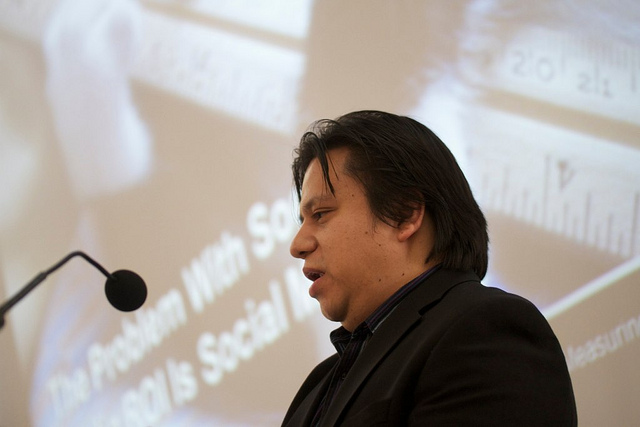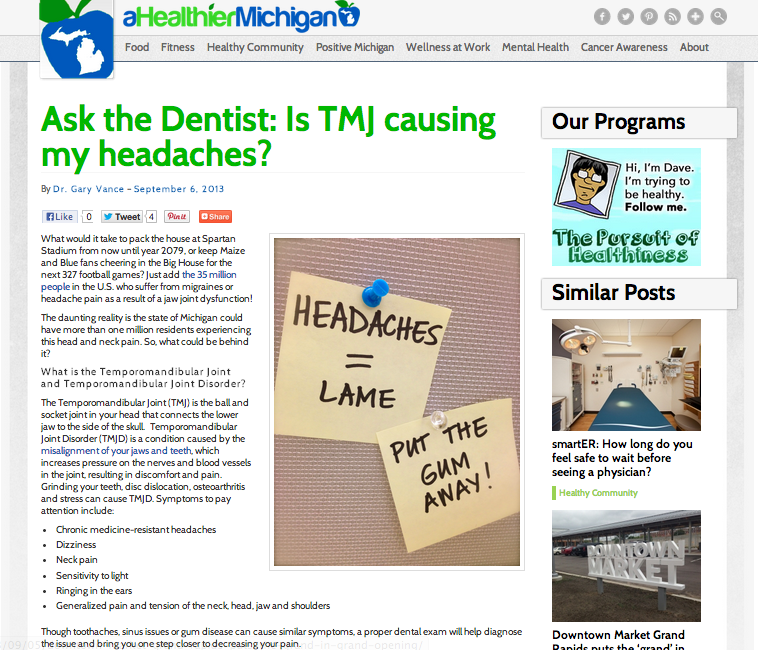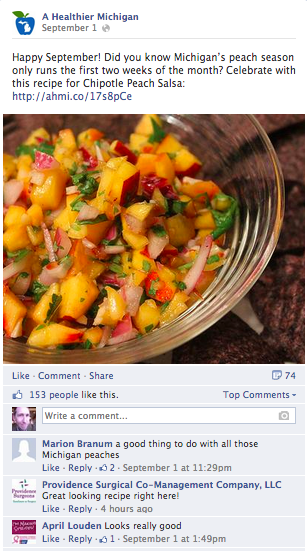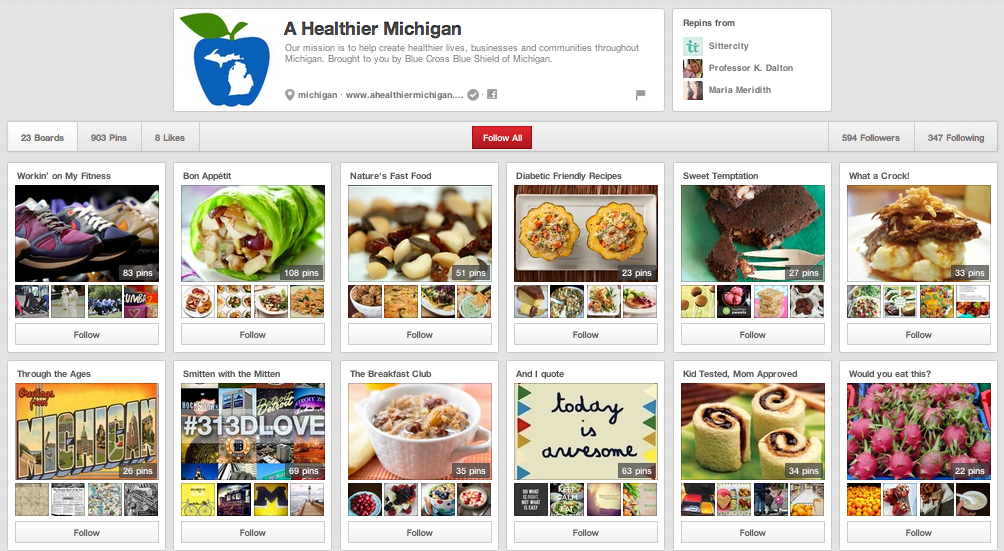Over the years, I’ve done a decent amount of work in the health care field. I’ve worked with Fairview, Allina Health, UCare and a host of other health care companies over the years. So, that also means I’ve done my homework when it comes to companies who are raising the bar in terms of marketing and communications in the health care space. Enter Blue Cross Blue Shield of Michigan, and David Murray. For years, BCBSM has been a trendsetter when it comes to digital communications in the health payer arena. And likewise, David has been a trendsetter in the Detroit market when it comes to digital marketing. The two seemed like a perfect fit when he accepted the new role last year.Let’s hear David’s story.
You took the job as manager of social media at Blue Cross Blue Shield of Michigan almost a year ago now. What have you learned about managing social for a health care insurance company in the last year?
That there are a lot of moving parts and governing factors when it comes to social media in the health insurance industry is probably the biggest lesson I’ve learned. Regulations alone can dictate the speed at which your brand can communicate to its audience. Then there are the many business objectives a brand in health care needs to take into consideration. This has a large impact on the direction where social media can lead or support communication and marketing efforts.
However, similar to past clients; I have also learned that subjects like health insurance and health care can have passion points that people relate to. This makes our brand approachable and ultimately personable.
Before BCBS you had spent most of your time on the agency side. Now you work in what is often labeled one of the most conservative industries–the health care insurance industry. What made you make the change?
It is fair to label the health insurance as conservative. However, with all the changes occurring to the industry, all health companies will need to find ways to become less conservative and join some of the main stream digital practices other large industries are adopting.
As health insurance becomes more of a consumer based industry companies should identify ways to communicate with their customers, and on their level. This is a direction we recognize and have been moving forward with since the beginning of the year.
As to what motivated me to make the change, I would have to say the challenge of working on a large brand in an industry that is pretty much in the public spotlight was a significant motivator. I like to challenge myself.
I’m a huge fan of your “A Healthier Michigan” blog. For someone who consults with health care brands (and, more specifically, health care insurance companies), I know from research that you guys are among just a handful of insurance companies that have really dove into social and use it to drive awareness around your key initiatives, campaigns, etc. I don’t believe you started the blog, but how have you continued the momentum for this blog/site among BCBSMI employees? And, what’s been the reaction internally to the blog?
Thank you for your compliments and kind words. I’m lucky to have one of the best content managers. Dave Lingholm and the team put a lot of time into our social media and content efforts; and as you mentioned they are paying off.
You are correct. AHealthierMichigan.com was started before I arrived, but it has always been built on a passion point of Blue Cross Blue Shield of Michigan – championing health and wellness for Michigan. While we want to provide top quality products and services to our members, we also want to give them helpful information and tips they can use to maintain their healthy lifestyles.
At the beginning of the year we revisited the blog to determine what we call its Content Bubble. This is a series of subjects that serves as the foundation of any and all content published to AHealthierMichigan. The majority of the content we create circles around passion points that relate to our industry, our brand and Michigan. Focusing on quality of content vs. quantity has helped us increase readership and referral traffic to AHealthierMichigan and our other social web properties.
We also take time to focus on strong images that grab a reader’s attention. In April we launched a redesign and the feedback internally and externally has been nothing but positive. We have seen an increase of not only participation on the blog, but readers have been spending more time exploring the site.
There is also an open invitation to people who want to contribute to the blog. This encompasses several of our business partners and health experts within our company as well as health professionals outside our brand. Having a wide range of subject matter experts helps AHealtheirMichigan become a helpful resource that people will want to come back to and ultimately share with their networks.
With health care being such a regulated industry, are there any topics or issues you just can’t talk about on your social channels? How does that shape your strategies and approaches?
For starters we have to be careful with the advice we provide and how we position it. There are disclaimers on our social channels (where applicable) that state how we cannot discuss an individual’s health information on public web properties. This is a violation of the Federal HIPAA privacy regulations. It is also important to be clear that the content shared should not be seen or used as a replacement for professional medical advice, diagnosis, or treatment.
Though these are two big restrictions, it hasn’t hindered us from providing strong content.
I’ve also been following your “Pursuit of Healthiness” campaign where you are taking a year to learn what it takes to live a healthier lifestyle. What prompted that campaign? What were your goals going into the campaign? And, what do the early results looked like so far?
The objective of The Pursuit of Healthiness was to help our brand come across as more than just a logo. I wanted our social efforts to be as personable as possible and I thought someone going through some of the health and wellness programs we suggest to our members would be a great way to humanize our brand.
I didn’t anticipate I would be the one going through this experiment. In my naivety I assumed that someone with our organization would eagerly volunteer. It soon became apparent that this wouldn’t be the case, and it was decided that I should do it. Logistically it made sense. I already had an online presence outside of the brand and our community manager, Grace Derocha, is a licensed and registered dietitian.
Beyond losing weight I didn’t really have a plan or any goals. We started off counting calories and getting me to eat sensibly and with healthier food options. Mixing in some exercise, I eventually saw the weight drop. Now Forty pounds lighter I no longer want to eat the bad foods I once craved. I still need to get in the habit of exercising regularly though!
You see a ton of engagement on your Healthier Michigan Facebook page (congrats!)–I’m curious, how often (if at all) are you using Facebook ads to drive some of that engagement? And, if you are using ads, what’s been your strategy?
Strategically focused monthly ad campaigns have been a significant factor in both our community growth and participation on all our Facebook pages. We take time to find the audience who would want to not only hit the “like” button on our ad, but who would also come back to our Facebook communities over and over again.
And while we do have ads to help build our community, our paid efforts are finding the right people who are sharing our pages and content with their friends. When we first began Facebook ads, majority of our new likes were coming from the advertisements. Now that we built a sizable community both through these ads and a defined content strategy, we’re seeing organic likes outperform ads. In July specifically, we had 46% of AHM likes come from Facebook’s suggested pages versus just 13% come from ads.
A health insurance company on Pinterest–not something you see every day. What’s your play on Pinterest–and how did you sell leadership on the benefits of pinning?
First I have to say that we as a team are fortunate to have leadership within our company who understand the value of social media, and who trust us to do what we feel is right for our brand. So, to answer your questions we didn’t have sell leadership that we should be active on this platform.
Again, I want us to be a visual brand on social media. Going back to our Content Bubble we know that the topics we talk about lead themselves to be very visual. If our average attention span on Internet content is only two seconds, we need to be conscious of how our content looks. The images are the hook, but the real value is in the content. Proof that we are using Pinterest effectively is that it has become one of our top traffic referral resources.
Our Pinterest page focuses on the visual play of healthy eating, healthy lifestyles, and campaigns we have throughout the year.
I’m curious–how does social fit into the larger marketing and PR picture at BCBSMI as “the new kid on the proverbial block”?
The Blues are focused on getting our brand to be more recognizable and top of mind with our members and Michigan residents, as we touch everyone in some way with our numerous partnerships across the state. Social has taken on a role of support in some instances, and in others, has lead campaigns and initiatives with the support of media – both paid and earned. Social isn’t the be all end all of brand positioning – but can play a significant role.
The social and media relations teams are closely integrated, sharing content, images, among other things, to determine the best way to tell a powerful story. For instance, a press release will work effectively on particular social channels, and our team works to identify how the to maximize the release, from blogs to podcasts and even infographics.
Working with the marketing team it’s about building what we like to call “lean in” activity. This is basically building interest leading up to a particular event. We use approved key messaging, calls to action, and visuals in line with what marketing is leveraging to ensure there is brand familiarity and alignment of our communication efforts
A fully integrated approach with Marketing and PR has yielded the best results.
David Murray photo courtesy of ThinkMoncur via FlickR Creative Commons.





0 Comments